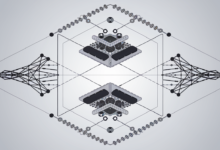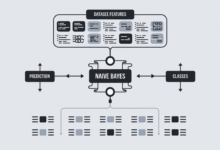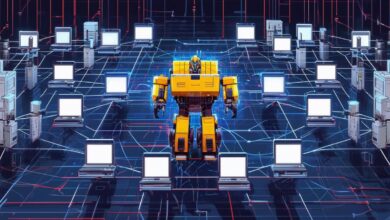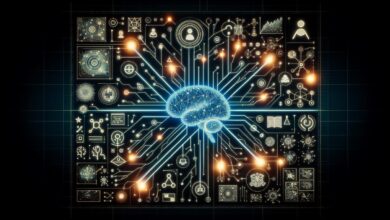Origin and Development of GPTs
The inception of Generative Pre-trained Transformers (GPTs) springs from research in deep learning and the advent of Transformer architecture. In 2017, a revolutionary paper titled "Attention Is All You Need" by Vaswani et al., laid the groundwork. This architecture diverged from previous models by maximizing the use of self-attention mechanisms. These mechanisms allow the model to weigh the importance of different words in a sequence, enhancing understanding and context.
GPT-1, introduced in 2018 by OpenAI, showcased the potential of large-scale unsupervised learning. This 117-million parameter model could generate coherent and contextually relevant text by predicting the next word in a given sentence. While it was a start, it still had limitations in dealing with long-range dependencies in text.
The development of GPT-2 in 2019 marked a significant leap. This iteration, with 1.5 billion parameters, expanded the model's capacity to generate detailed and nuanced text. Its ability to create highly convincing articles, poetry, and even code snippets raised eyebrows and ethical concerns due to its potential misuse.
GPT-3, launched in 2020, catapulted these models into mainstream consciousness. With a staggering 175 billion parameters, GPT-3 could perform tasks like translation, question-answering, and creative writing with remarkable accuracy. This version employed more sophisticated self-attention mechanisms, allowing it to understand and generate text that could rival human-level coherence.
The latest iteration, GPT-4, continues this trend of scaling up. With even more parameters and refined training techniques, GPT-4 pushes the boundaries further. Key innovations include advanced unsupervised learning methods that enable it to assimilate context from vast amounts of text data. This model is more adept at capturing nuances, sarcasm, and even humor.
The trajectory from GPT-1 to GPT-4 underscores rapid innovation in natural language processing. Each iteration brings improvements in self-attention mechanisms and unsupervised learning, making these models more versatile and powerful.
Operational Mechanisms of GPTs
Central to the operational mechanisms of Generative Pre-trained Transformers (GPTs) is the transformer architecture, an innovation that has revolutionized natural language processing. Introduced in the "Attention Is All You Need" paper, the transformer architecture diverges sharply from traditional recurrent neural networks (RNNs) and convolutional neural networks (CNNs) by eschewing their sequential data processing in favor of parallelization. This approach allows GPTs to handle long-range dependencies in text more effectively.
The backbone of the transformer architecture is the self-attention mechanism, a sophisticated method that enables the model to assign different weights to various words in a sentence. Self-attention works by creating attention scores for each word in relation to every other word, allowing the model to discern the importance of individual words in varying contexts. This mechanism is crucial for understanding the nuances of natural language, providing the model with the ability to maintain coherence over long passages of text.
GPTs are trained using an unsupervised learning approach, where the model learns patterns in language by processing vast amounts of text data without explicit human annotations. This training process begins with the pre-training phase, wherein the model is fed a diverse and extensive corpus of text. It learns by predicting the next word in a sequence, developing a deep understanding of grammar, context, and semantics through this process. The model's training involves significant computational resources, often requiring advanced hardware and substantial energy consumption.
Pre-training lays the groundwork, endowing the GPT with a general understanding of language. The next phase, fine-tuning, involves training the model on a narrower, task-specific dataset, which helps in customizing the model's capabilities to specific applications such as:
- Translation
- Summarization
- Dialogue generation
Combining these phases allows GPTs to perform a broad array of tasks without requiring task-specific architectures or extensive custom training for each new application.
As the model size increases from GPT-1 to GPT-4, the number of parameters grows exponentially, enabling more complex and nuanced language generation. For instance, GPT-3's 175 billion parameters allow it to capture intricate language patterns and generate highly contextual responses far superior to its predecessors.
In essence, the operational mechanisms of GPTs, anchored in transformer architecture and self-attention mechanisms, combined with a robust unsupervised learning framework, enable these models to assimilate a vast array of linguistic nuances. These foundational elements make GPTs powerful tools for a wide range of applications, from automating content generation to advancing human-computer interaction.
Applications and Use Cases
GPTs have a wide array of applications spanning several domains, showcasing their versatility and utility in modern technological frameworks. One of the most prominent applications is content generation. These models can produce high-quality written content, ranging from news articles and reports to creative pieces like poetry and short stories. They automate the content creation process, enabling faster and more efficient production while maintaining a high standard of language coherence and stylistic consistency. For instance, automated journalism platforms utilize GPTs to generate quick and accurate news summaries, thereby reducing the workload of human journalists.
Another crucial application of GPT models is in the realm of conversational agents. These AI-powered chatbots and virtual assistants provide a more natural and interactive user experience. Leveraging the advanced language understanding capabilities of GPTs, these agents can:
- Manage customer service inquiries
- Offer technical support
- Perform transactional tasks
Companies like OpenAI have developed chatbots that can maintain context over long conversations, making interactions feel significantly more human-like. For example, customer service bots powered by GPT technology are adept at solving common issues without the need for human intervention, increasing both efficiency and user satisfaction.
Language translation is another critical area where GPTs have made a substantial impact. Traditional translation tools often struggle with context and idiomatic expressions, but GPT models offer more nuanced and accurate translations. They excel at understanding the subtleties and cultural nuances inherent in different languages, making them invaluable for global communication. Programs incorporating GPTs can translate extensive documents, chat interactions, and even provide real-time translation services, breaking down language barriers and facilitating smoother cross-cultural exchanges.
In education, GPTs serve as powerful tools for enhancing personalized learning experiences. They can generate diverse educational content, such as customized quizzes, explanatory material, and even entire lesson plans. Advanced models can also interact with students, tutoring them in subjects ranging from math to language arts. For example, AI-driven educational platforms utilize GPTs to create adaptive learning environments that cater to individual student needs, thereby improving educational outcomes and making learning more accessible.
Research is another domain benefiting from the capabilities of GPT models. These models assist in data analysis, literature reviews, and hypothesis generation, making them valuable assets in academic and scientific research. Researchers use GPTs to sift through vast quantities of data, identify patterns, and generate insights that would be time-consuming for humans to uncover. Specifically, GPT models can summarize complex research papers, making it easier for scientists to stay updated on the latest developments in their field without having to read every new publication in detail.
Ethical Considerations and Challenges
As we explore the ethical considerations and challenges associated with Generative Pre-trained Transformers (GPTs), it is vital to acknowledge the multifaceted issues that arise from their deployment. One of the foremost concerns is bias in training data. These models learn from extensive datasets harvested from the internet, which inevitably include biased content. The training process can therefore propagate societal biases, resulting in outputs that may exhibit gender, racial, or cultural prejudices.1 For instance, a GPT model trained on biased data might generate text that reflects stereotypes, unintentionally perpetuating harmful ideas.
Addressing this issue requires a proactive approach. One strategy involves auditing and curating training datasets to minimize bias. Researchers and developers must ensure a diverse and representative dataset, rigorously vetted to exclude biased content. Additionally, employing bias detection algorithms during both the training and fine-tuning phases can help identify and mitigate instances of unfairness in the model's outputs. Techniques such as adversarial training may also be used, where models are trained with adversarial examples designed to challenge and reduce biases.
Another considerable challenge is the potential for GPT models to generate misinformation. The ease with which these models can produce coherent and convincing text makes them susceptible to misuse, such as the creation of fake news or misleading articles.2 This can have serious implications, from influencing public opinion to causing social unrest. To counter this, developers must implement robust content monitoring systems. These could include watermarking AI-generated content, enabling easier identification, and deploying advanced filtering mechanisms that flag potentially harmful information before it reaches the public.
GPTs also raise significant concerns regarding data privacy and security. As these models are trained on vast amounts of text data, including potentially sensitive information, there is a risk that they could inadvertently memorize and output confidential details. Ensuring robust data handling protocols and incorporating privacy-preserving techniques, such as differential privacy, can protect against such risks. Regular audits and compliance with data protection regulations further bolster the privacy and security measures.
The deployment of GPT models also prompts discussions about job displacement. As these AI systems become increasingly capable of performing tasks traditionally done by humans, there is a fear of significant job losses in sectors such as journalism, customer service, and even programming.3 However, it is essential to view GPTs not just as replacements but as augmentative tools. They can handle repetitive, mundane tasks, freeing human workers to focus on more complex, creative, and strategic work. Industries should promote reskilling and upskilling initiatives, ensuring that the workforce adapts to the changing landscape by acquiring skills complementary to AI technologies.
Promoting responsible AI usage extends beyond technical solutions. It requires a comprehensive framework encompassing ethical guidelines, transparency, and accountability. Developers and organizations deploying GPTs should adhere to ethical standards that prioritize fairness, privacy, and societal well-being. Transparent reporting on the model's capabilities, limitations, and potential risks can foster trust and ensure informed use. Forming multidisciplinary ethics committees can provide ongoing oversight, ensuring that AI deployment aligns with ethical and societal values.
Future Prospects and Societal Impact
Looking ahead, the future prospects and societal impact of Generative Pre-trained Transformers (GPTs) present a landscape brimming with potential advancements and transformative benefits across various sectors.
Future iterations of GPT models are expected to build on current advancements, enhancing their contextual understanding and reducing generation errors further. Researchers are focusing on creating models that can comprehend and replicate human intricacies even more accurately. For instance, GPT-5 and beyond might feature even more parameters, allowing them to capture subtler nuances in human conversations such as sarcasm, humor, and emotional undertones. This will make AI interactions feel even more genuine and intuitive, further blurring the line between human and machine communications.
In the realm of education, future GPT models could revolutionize personalized learning. Advanced AI tutors capable of providing individualized lesson plans, real-time feedback, and adaptive learning experiences could significantly enhance educational outcomes. By leveraging these sophisticated models, educational institutions could offer more accessible and customized learning solutions, bridging gaps in traditional education systems. This could democratize education, making high-quality learning opportunities available to a broader audience, regardless of geographical limitations.
Healthcare is another sector poised to benefit immensely from the future development of GPT technology. Advanced language models can assist in medical diagnostics by:
- Analyzing patient data
- Summarizing medical literature
- Generating hypotheses for complex medical cases
They can enhance doctor-patient interactions through intuitive, multilingual virtual assistants capable of managing routine inquiries and providing health advice. The development of highly accurate AI-driven models for interpreting medical imagery and predicting treatment outcomes could lead to more efficient and personalized healthcare solutions.
The creative industries stand to gain significantly from the evolution of GPTs. Future models could assist artists, writers, and musicians by generating ideas, drafting preliminary works, and even creating entire pieces of art. This collaboration between AI and human creativity could push the boundaries of artistic expression, leading to new genres and forms of art. As AI tools become more integrated into creative workflows, they could help streamline production processes and reduce costs, making creative endeavors more accessible to a wider range of individuals.
Despite these promising advancements, it's crucial to acknowledge and address the broader societal implications. The integration of advanced GPTs can create new job opportunities and boost productivity across various fields. However, this also necessitates a focus on reskilling and upskilling the workforce to adapt to AI-augmented roles. Emphasizing continuous learning and development will be key to ensuring that society can navigate an increasingly AI-driven world.
As GPT technology continues to develop, ethical considerations must remain at the forefront. Striking a balance between leveraging AI's capabilities and maintaining human oversight will be critical in areas involving sensitive decisions, such as healthcare and education. Ensuring that AI models are transparent, accountable, and designed with ethical safeguards will help mitigate risks related to bias, misinformation, and privacy concerns.
Revolutionize your content with Writio – an AI writer creating top-notch articles for you. This page was crafted by Writio.
- Bender EM, Gebru T, McMillan-Major A, Shmitchell S. On the dangers of stochastic parrots: can language models be too big? In: Proceedings of the 2021 ACM Conference on Fairness, Accountability, and Transparency. 2021. p. 610-623.
- Zellers R, Holtzman A, Rashkin H, Bisk Y, Farhadi A, Roesner F, Choi Y. Defending against neural fake news. In: Advances in Neural Information Processing Systems. 2019. p. 9054-9065.
- Manyika J, Lund S, Chui M, Bughin J, Woetzel J, Batra P, Ko R, Sanghvi S. Jobs lost, jobs gained: What the future of work will mean for jobs, skills, and wages. McKinsey Global Institute. 2017 Nov 28.







